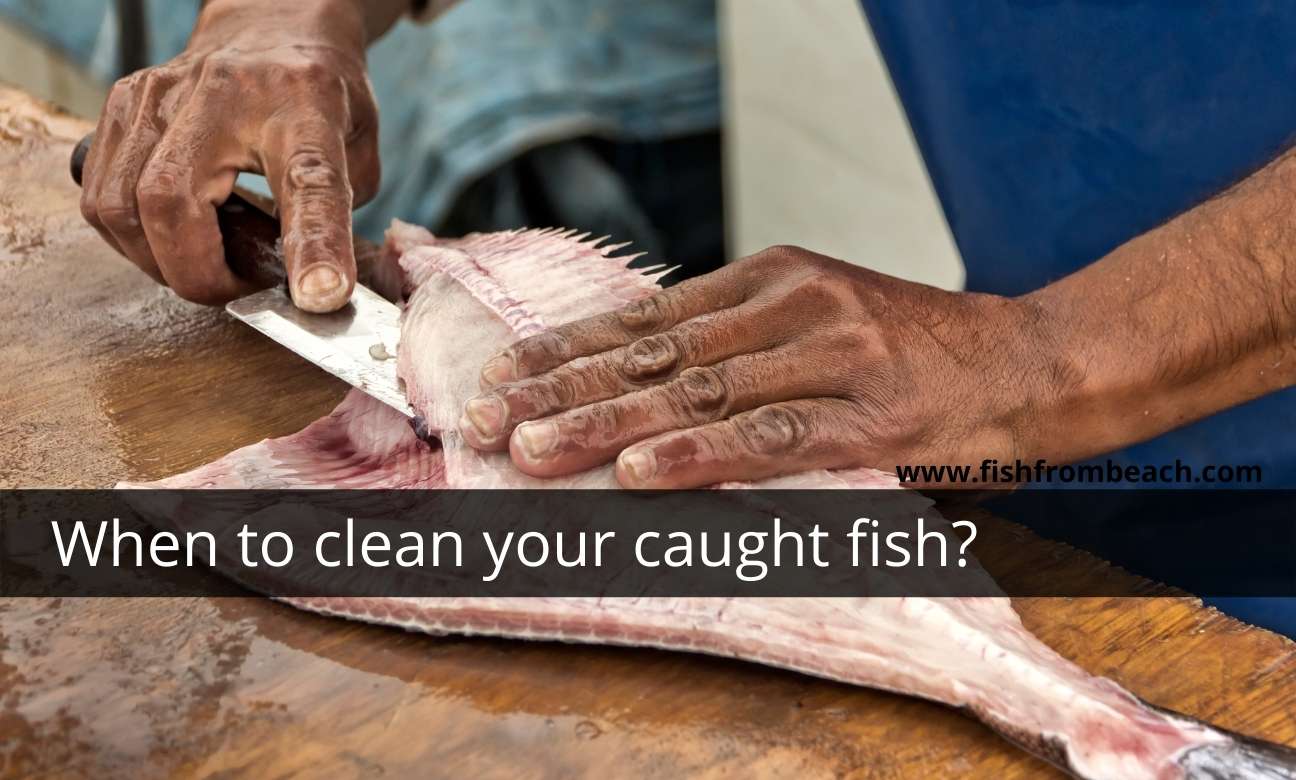
How long after catching a fish should you clean it to preserve its taste and flavor?
This has always been a very vital question among anglers.
If you intend to eat your catch, what is the best time, and what should you do to keep it fresh and tasty? If you decide to put your fish in the ice or freezer without cleaning and gutting them, how long can it last?
In this article, I’ll break down the best time and how to clean a fish caught during saltwater fishing? Read on and find various cleaning techniques and processes you need to clean your fish.
The best time to clean a fish after catching it
How long after catching a fish should you clean it to preserve its taste and flavor depends on the fish species and the weather.
As a rule of thumb, the best time to clean and gut your fish is right there on the spot. Some fishermen tend to delay cleaning their fish, but the ideal thing is to clean it quickly and correctly as soon as possible to keep it fresh and tasty.
Fish does not stay good for too long. Cleaning your fish 2-6 hours after catching it is ideal because the internal organs and the gills deteriorate first due to bacteria.
Once your fish is dead, the internal organs and gills will deteriorate fast due to digestive enzymes and bacteria.
Cleaning the blood cavity and removing the internal organs of your fish soon after you catch it will therefore prevent spoilage.
Most angler docks have a fish cleaning station with PVC pipes and hose that supply water for cleaning and washing your fish as you prepare it for consumption. If the rule in your state or locality doesn’t allow you to clean your fish before taking them home, you can put your fish in a cooler with ice within a few hours of catching them to keep them cool and fresh.
There are other anglers of the opinion that if you bleed your fish and get all the blood out, you’ll get delicious, clean, white fillets.
To bleed your fish, you’ll need to use a sharp knife to cut through the artery between their gills and throat, take out the gills, and allow it to bleed out in clean water.
How to clean your fish?
The process of cleaning a fish is easy. If you are a beginner you might find this difficult, but with practice, it becomes quite an easy operation.
To clean your fish, place it on the table or a cutting board and cut it open with a sharp knife. Open the fish and remove all the organs and intestines. Spread the body open, cut out and remove all the entrails in the fish’s anal area. Scrape out all the black tissues and rinse the inner cavity of the fish with cool water.
When you’re through with removing the internal organs, you will need to rinse your fish and clean the table. Then you can properly discard the gut, head, and other unwanted parts.
Using the guts of cleaned fish as chum is also a good option an might help you catch more fish.
Once your fish is clean, there are some cleaning techniques to prepare your fish for consumption.
Having a set of cleaning routines is essential when surf fishing. Here are some cleaning and preparation techniques that you can adopt in your fish cleaning process.
- Scaling – Scaling is removing and scraping the fish scales from the skin. Fish species like croaker and bluegill are scaled until their body becomes smooth.
- Skinning – Some species like catfish and eel need skinning instead of scaling. Skinning is removing the fish skin during the cleaning and dressing process.
- Filleting – Filleting your fish is cutting away a lengthy piece from both sides that runs parallel to the backbone. It is a common way to clean and prepare your fish for cooking.
- Steaking – Steaking is cutting your fish into steaks. Some large fish like salmon, tuna, swordfish, mackerel, and shark require cutting their flesh into thick steak pieces after being cleaned.

Conclusion
The best and ideal thing is to clean your fish right after catching it. Cleaning your fish soon after a catch will help to preserve its taste and flavor. So take your fish off the bait, kill it, bleed it out, and clean it all at once.
Although weather and fish species may vary, it is advisable to clean your fish 2 to 6 hours after catching it. Always bleed out and keep your fish on ice until you are ready to clean your fish. Saltwater fish seems to last more than freshwater fish if you remove the gills and store them in ice.
Some recommended surf fishing gear(*)
Note (*): If you make a purchase through links from this website, we may get a small share of the sale from Amazon or other similar affiliate programs.
Surf Fishing Survey
Help us provide you with better content by answering simple questions about your surf fishing experience and knowledge.
We will put the collected responses together and turn them into valuable information that will help you catch more fish from shore 😉
Note: No personal information will be collected with your answer.
